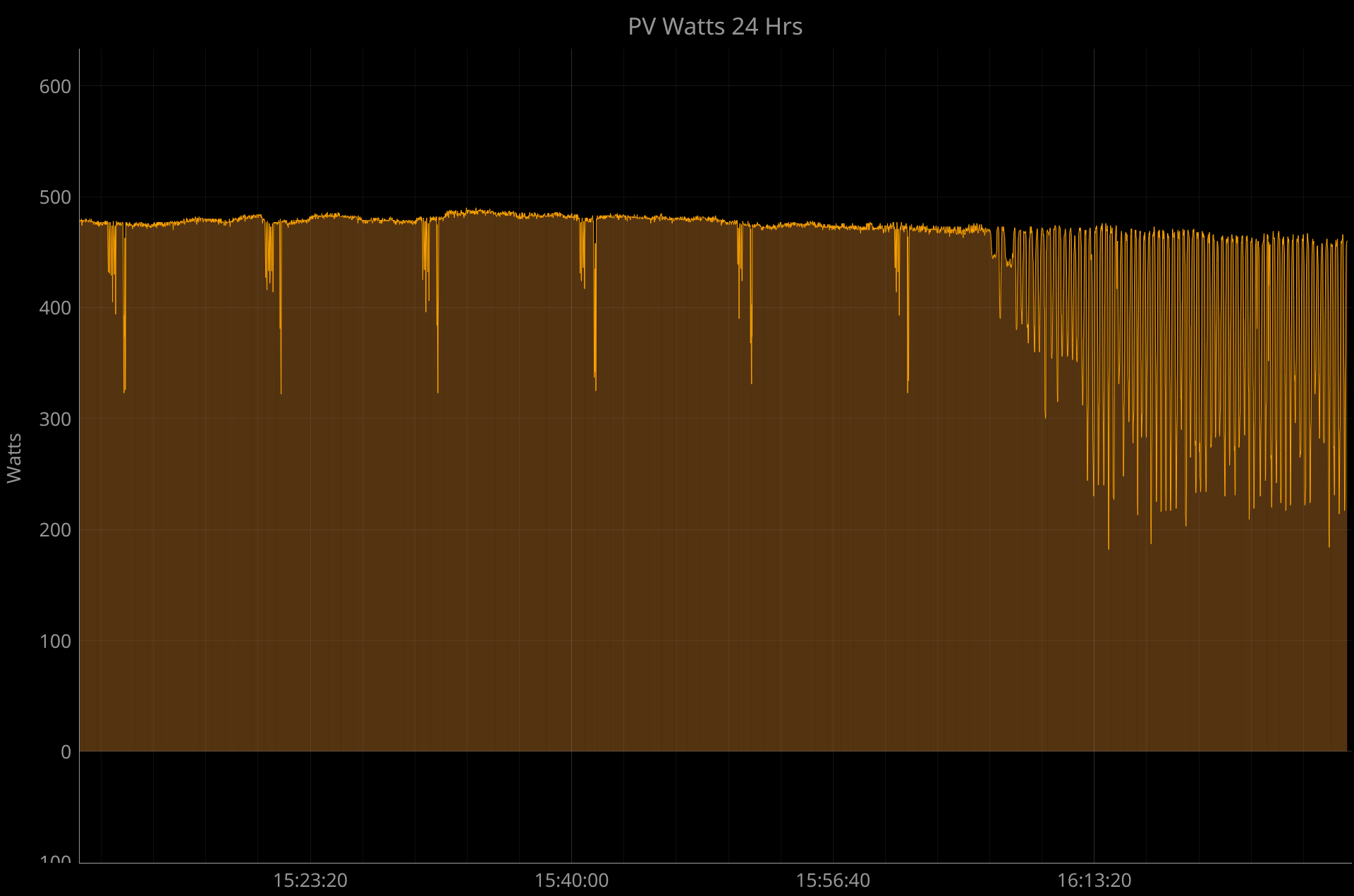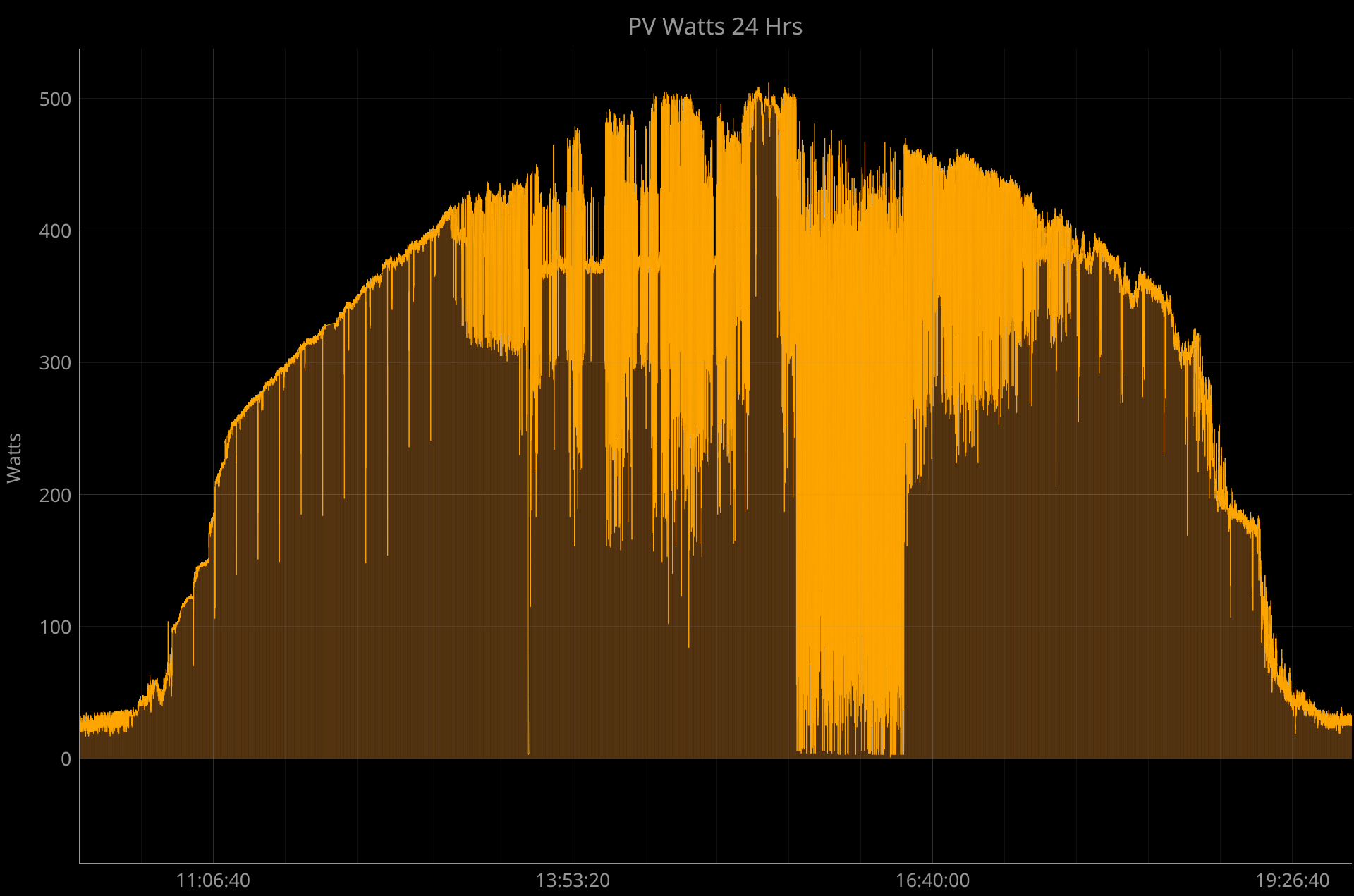Multiplus II 12/3000/120-50 2X-120V
SmartSolar Charger 150/35 (4 100W panels in series)
SmartSolar Charger 100/20 (Single 250W panel)
BMV 712
400Ah LifePO4 Batteries (X2 200AH in parallel)
CerboGX
================================
ESS Feed-in Limiting causes MPPT to be erratic.
Battery charging MPPT's are pretty smooth and maxed out.
As soon as the battery is full, Feed-in is active and the MPPT's become erratic.
Is it normal? Maybe the inverter trying to calculate proper sync values?

Here is another example with limiting turned on

Example with limiting turned off

